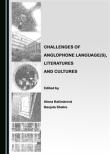Alexis Wright as one of the most appreciated writers of indigenous origin, a member of the Waanyi people, and winner of the Miles Franklin Literary Award, has found her inspiration in traditional Aboriginal cosmology (very closely related to her people) as well as in the beauty of South American magic-realist authors (Carlos Fuentes or Gabriel Garcia-Marquez). Her Carpentaria (2006) represents one of the most unique views on the Aboriginal communities in Australia, as the novel points at a set of serious problems and conflicts resulting from the clash of indigenous and Western cultures, common for most of the indigenous population in Australia. Wright has also been inspired by the history of the Waanyi people who had been largely dispossessed from their traditional lands. Through her own memories and the memories of her people, Wright incorporates "cultural memory" and gives it its "literary representation," moreover, what makes her work extraordinary is the fact that she goes beyond pure transcription of historical events or the genre of life-writing known from the works of other Aboriginal writers. Even though she reflects the traditional way of storytelling, covering many spiritual aspects of Aboriginal culture that she was exposed to as a child she deals with the effects of transformation of the oral tradition into other forms enabling the preservation of the knowledge of her people. She smartly uses tools of Western colonial society, the English language, and the genre of the novel, and adjusts them to the needs of self-expression in the spirit of Aboriginal oral traditions. As Martin Renes maintains when referring to Wright's work, she has employed some characteristic features of Dreamtime narrative within the Western tradition in order to create the work as it enables a different view and "opens new horizons". Molloy reasons that "[...] accepting that the Aboriginal people must adopt Western forms to have a voice, the novel demonstrates that these forms can be changed and redrawn to reflect Aboriginal concerns, storytelling styles and language use." Bill Ashcroft deals with that process more deeply in his Empire Writes Back (2004) as he analyses the formation and characteristics of post-colonial literature.' (Introduction)



